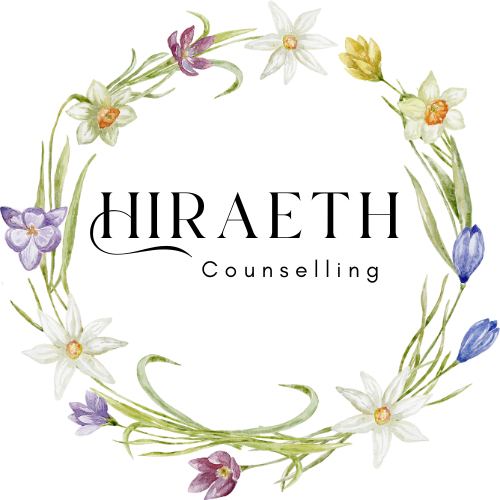We often imagine that our personal growth and success are purely a matter of willpower or mindset. We see others who appear to move through life with ease. But the truth is, we do not grow in isolation, humans are wired for tribe, connection and the right kind of tribe ensures we are supported to thrive. We grow, or struggle to grow, within various environments. Our homes, our relationships, our workplaces, the media we consume, and even the subtle expectations of culture all become the soil in which our lives are planted.
Sometimes that soil is nourishing, rich with connection, encouragement, and freedom. At other times, it can feel barren or stifling, judgmental, critical, leaving us struggling to survive, let alone thrive.
What It Means to Thrive
Philosopher Martha Nussbaum offers a powerful lens on human flourishing through what she calls the capabilities approach. In her view, thriving means more than simply surviving day to day. It means having access to certain essential capabilities that allow us to live fully human lives. These include:
- Life and Bodily Health: The chance to live a life of dignity, not cut short by neglect, harm, or deprivation.
- Bodily Integrity and Movement: The freedom to move safely, to explore the world physically and emotionally, without fear of violence or constraint.
- Senses, Imagination, and Thought: The ability to learn, to imagine, to play, and to express oneself without repression.
- Affiliation: The deep human need for connection, to be seen, respected, and valued by others.
- Other Species and the Natural World: The recognition that we are part of a greater whole, finding meaning in nature, animals, and the living Earth.
- Play: The freedom to enjoy leisure, creativity, and joy, without constant pressure or fear.
- Control over One’s Environment: Having a voice, autonomy and the chance to shape our lives and influence the spaces we inhabit.
These are not luxuries. They are the basic conditions of human dignity, supporting growth, even in times of adversity.
Humanistic psychologist Carl Rogers echoed this truth in his own way: people, like plants, need the right conditions to grow. Empathy, authenticity, and acceptance are not “extras.” They are nutrients for the soul. Without them, our growth is stunted. Both in childhood, as we develop identity and in adulthood, as we move through each life stage.
Growth Across the Lifespan
The psychologist Erik Erikson described human development as a series of psychosocial stages, each one presenting us with a challenge and an opportunity for growth. From infancy to later life, we are always negotiating between needs for safety, connection, and self-expression.
- Infancy: Trust vs. mistrust. Do we feel safe in our environment? Do our caregivers meet our needs with consistency and warmth?
- Early childhood: Autonomy vs. shame and doubt. Can we move freely, explore, and make small choices without fear of punishment or ridicule?
- Play age: Initiative vs. guilt. Are we encouraged to imagine, to play, to create and is our curiosity met with patience?
- School age: Industry vs. inferiority. Do we feel capable of learning and achieving, supported by an environment that values effort rather than comparison?
- Adolescence: Identity vs. role confusion. Can we explore who we are, supported by affiliation and belonging, while still being free to question?
- Young adulthood: Intimacy vs. isolation. Do our environments support deep, authentic connection, or do we feel cut off and unseen?
- Adulthood: Generativity vs. stagnation. Do we feel able to contribute, to nurture others, to create meaning in our communities?
- Later life: Integrity vs. despair. Can we look back with a sense of coherence and wholeness, or are we left with regret about lives unlived?
When our environments fail to provide the conditions that Erikson and Nussbaum both describe, safety, movement, connection, creativity, and belonging, we may struggle at these stages. Instead of growing into trust, initiative, or intimacy, we may find ourselves stuck in mistrust, guilt, or isolation.
This is not a personal failure. It is the result of environments that did not provide us with what we needed, and although we seek change, we may not be able to effect it alone (see Beyond the ACE Score: Understanding Childhood Adversity, Resilience, and Growth).
And yet, the remarkable thing about human beings is our capacity to repair. Even if earlier stages felt fractured, new environments, such as a healing therapeutic relationship, can offer the soil we needed then, and still need now.
When Environments Impede Healing
For many, these conditions for growth are not present. Some people grow up in families where love, nurture and warmth feel conditional or transactional, or are simply not present. Others work in environments where their voice is silenced, knocking their confidence and self-worth. Still others find that the media and culture surrounding them constantly reinforce a sense of inadequacy or shame. Research shows social media increases anxiety and mental health issues, for younger people in particular (Lai et al. 2023).
When we live and operate in such environments, healing becomes harder. We may begin to doubt our worth, silence our true selves, or remain stuck in cycles of psychological discomfort. It is not that we lack resilience; it is that the soil around us does not allow our roots to spread.
“The seed of potential will grow in the right conditions” (Rogers, 1959).
The Lonely Path of Growth
And yet, some people do begin to grow even in difficult environments. They start therapy. They reflect. They learn to set boundaries. They discover new ways of being.
But this growth can be a lonely path. When we begin to change, those around us may not understand. Sometimes they resist, because our growth challenges their comfort or the roles they have grown used to. At times, growth means risking tension or even loss in relationships we once depended on.
This can feel deeply painful. Many ask: If I change, will I lose the people I love?
There is no simple answer. Sometimes relationships deepen when we bring our true selves forward. Sometimes they fall away. Both outcomes can feel frightening. And yet, staying stuck to preserve connection carries its own risk: a quiet suffering that erodes our sense of authenticity and freedom.
Growth Through Adversity
The truth is, we cannot always control our environment. We cannot force others to grow alongside us. However, we can learn to cultivate our inner environment, including compassion, patience, resilience, and a willingness to continue moving toward what nourishes us.
We can also seek out new environments, communities, relationships, and practices that support who we are becoming. A walking group in nature, a book club that sparks imagination, an office environment where empathy is abundant.
Sometimes growth means learning to carry the tension of two truths: that we may grieve the distance from loved ones and celebrate the freedom of becoming more fully ourselves.
This is the paradox of thriving in adversity: we discover that even in difficult soil, growth is possible, but the process requires courage, gentleness, and a willingness to honour our own becoming.
Why Therapy Can Help
Finding the right therapist is the most important step. Therapy offers something rare: an environment intentionally designed for growth. For many, it is the first time they experience Rogers’ essential conditions, empathy, authenticity, and unconditional positive regard. Within this safe soil, the parts of us that felt too fragile to show can finally come forward.
Therapy does not erase the challenges of our wider environment. But it can strengthen us to navigate them differently, to create spaces of belonging within and around us, and to step more confidently into the life we long to live.
A Gentle Reflection
If you would like, take a moment to pause. Perhaps with a pen and paper, or simply in quiet thought, reflect on the following:
- Look back: What environments in your past have shaped you, both positively and negatively? Which “soil” helped you grow? Which stunted you?
- Look around: In your current environment, where do you feel nourished? Where do you feel drained or unseen?
- Look forward: What is one small change you could make to create a more supportive environment, whether in your home, your relationships, your routines, or your inner world?
- Look inward: What qualities within yourself can you nurture, kindness, courage, and patience, that might help you grow even in difficult conditions?
Take your time. Be gentle with what arises. Growth is not a straight line, and thriving is not about perfection. It is about allowing yourself the chance to become more fully alive, more fully human.
You deserve more than survival. You deserve to thrive.







